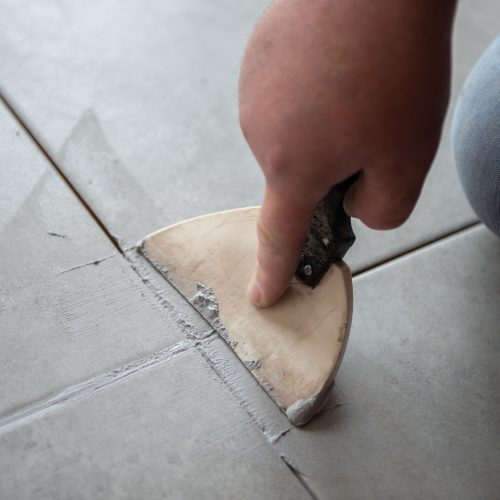October 5th, 2018 | Stone & Tile
When tackling the issue of slippery tiles, it’s crucial to grasp the underlying reasons behind this common problem. Identifying the three primary causes is the first step toward finding a resolution. By delving into the specifics and understanding which factor is at play, you can adeptly craft a solution. This targeted approach is key in discovering how to fix slippery tiles effectively, ensuring a safer and more secure flooring.
Some tiles are simply too smooth for the application. There are limited opportunities for resolution on this one.
Detergent residue occurs extremely often. Sometimes it can be quite “invisible”, other times it displays itself as “greying” often on low corners or edges of tiles. Auto scrubber tyre tracks on tiles are also an indication. Mostly it is alkaline residue from frequent maintenance cleaning regimes. However, the chemical residue can also be acidic if an acid cleaner has been frequently used.
This is also a prime cause of slippery tiles and is mostly found in commercial kitchens and sports change rooms. It is caused by incorrect cleaning products or methods being used. Sometimes the chemical makes it worse in that it partially emulsifies the fatty acids and creates a sticky surface which attracts more soiling but becomes like an ice rink when wet.
Clean one tile with Tile & Grout Cleaner Pro (alkaline) at 1:10 and the other with Tile & Grout Restore (acidic) at 1:10 and scrub briefly with two white pads. Rinse well. Assess which tile responds best to the treatment. If the Tile & Grout Cleaner Pro worked best, then fatty acids and oil is likely the issue. If Tile & Grout Restore worked best then the detergent residue is likely the issue.
It is important to get down to the base tile. And using the Tile & Grout Restore and Tile & Grout Cleaner Pro as mentioned above, is the best way to do it. However, on a deep clean like this, you must rinse thoroughly with clean water to ensure no residues remain.
Following the deep-clean, the tiles should then be maintained with Tile & Grout Cleaner Pro (or LF) at 1:100. If stronger dilutions are used then a separate clean water rinse must be done.
Once a month switch to Tile & Grout Restore at 1:100. This will remove any detergent residue build-up and any water salts build-up.

Epoxy Grout Smear When it comes to tiling projects, achieving a flawless and long-lasting finish is the ultimate goal. However, [...]
Read more
Maintaining Natural Stone Benchtops Natural Stone. A rare piece of art we use in our everyday life. As it is [...]
Read more
Oil stains are an unsightly addition to any porous surface. Download PDF article here Whether it be concrete, natural stone [...]
Read more
All your questions regarding efflorescence answered in one handy article. Let’s start with the word itself. How do we [...]
Read more